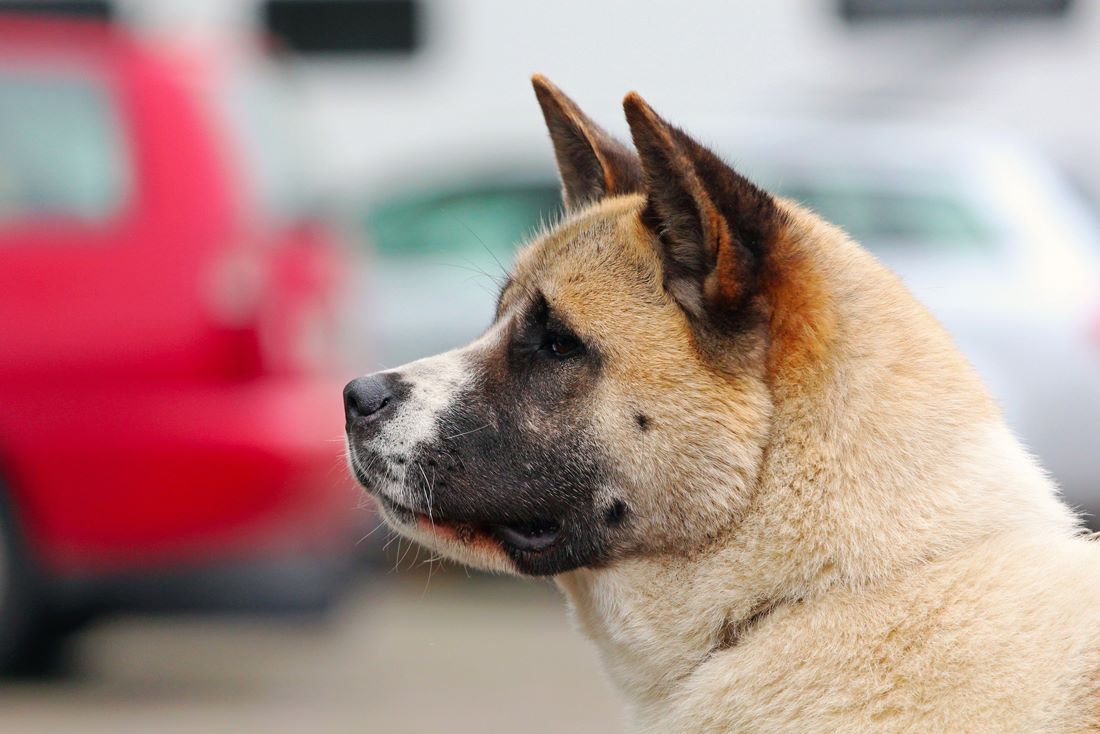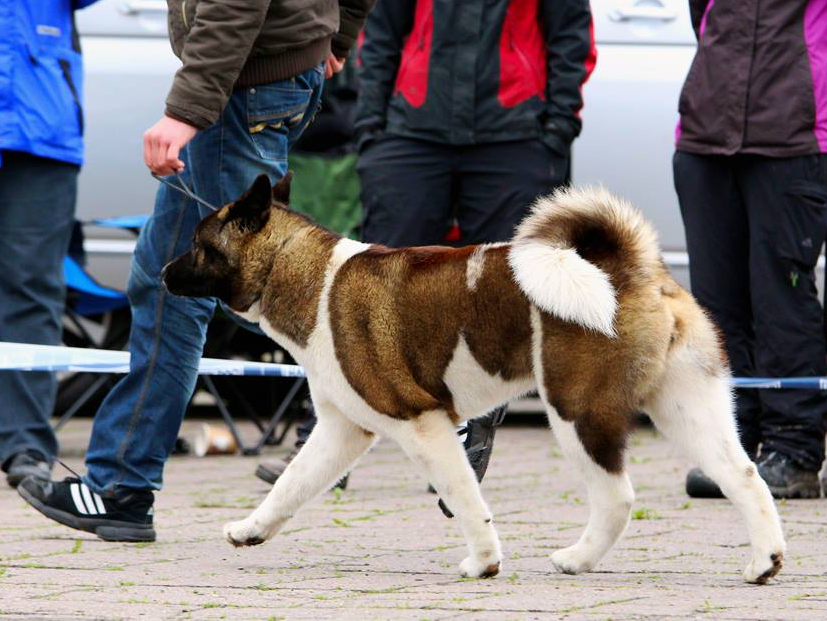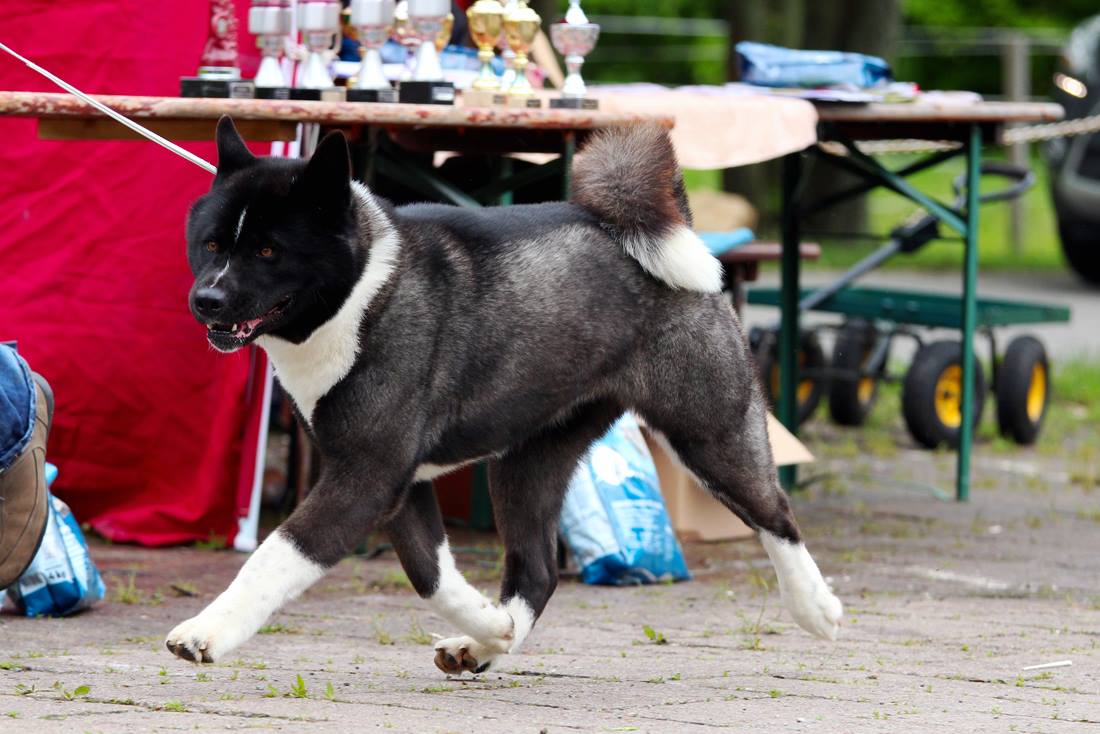Akita Inu - large dog
Natural monument since 1931
The Akita originates from the prefecture of the same name (northern Honshu Island). When it was declared a natural monument, it was no longer allowed to be exported. This changed with the occupation period, and in 1945, many Akitas came to America. Both the Japanese and the American Akitas originated in Japan and shared the same developmental standard until around 1950. From this time on, a split developed. There were two broad divisions of Akita breeds, as many Akitas were crossbred (Tosa, Mastiff, German Shepherd, etc.).
The Dewa line is the origin of the American Akita. This line was undesirable in Japan because of the crossbreeding. They had a more "bear-like" appearance. Initially, these dogs were highly rated (Congo type), which delayed the recovery process and caused the differences between the Akita breeds.
In the Ichinoseki line, however, improvements were evident. The goal was to return to the Spitz type with small, triangular ears and fox-like eyes.
In the USA, a club was founded for the Dewa line, or Congo type, and the standard was adopted and subsequently published (AKC). When the studbook banned imports from Japan, the Akita breeds developed in different directions. After it reopened in 1992, the differences were so extreme that, apart from the pricked ears and curled tail, no common external characteristics could be identified.
In the early 1990s, the FCI standard for the Akita was interpreted according to the Japanese type, thus favoring it. This led to the breed's split in 2000, as the American Akita no longer had any chance. Thus, the American Akita is a relatively new breed, but nevertheless shares the same roots as the Japanese Akita.
Here, we divide AKITA into Japanese and American AKITA. In other countries, the division is into American AKITA and Japanese AKITA.
Character:
Everyone knows him, everyone loves him - HACHIKO. The most loyal canine soul. He came to his masters, whom he always accompanied, via a fateful detour. Hachiko sensed the blow of fate and behaved uncharacteristically. It was his master's last joy before he died. Nevertheless, Hachiko wanted to pick him up every day and waited for him to return to him on his usual schedule. All means and methods could not stop him, so he was cared for by everyone on site until he himself died and finally saw his master again.
This unconditional loyalty is said to be the Akita's. He is a large, gentle giant, yet very alert and needs to be kept busy accordingly! He has a low "will to please" but a high level of commitment. The Akita is and remains a little stubborn, independent and self-sufficient.
News:
Unfortunately, as with the Shiba inu, a fashion trend is emerging due to the film adaptation of Hachiko. However, these dogs, like all others, require a lot of patience and consistency. They are often underestimated and given the wrong advice/simply sold, so many overwhelmed families give these good giants back, spoiled.
One shouldn't underestimate the will of an Akita. A surveillance camera in America captured an interesting footage. Akitas are very alert. They were also once used as guard and fighting dogs. The footage shows a bear "breaking into" the family's territory, which the Akita immediately defended and drove the bear away.
Health:
Akitas are generally very healthy and robust dogs thanks to careful selection. Allergies and skin diseases (especially sebaceous adenitis, which is autosomal inherited) as well as age-related ailments such as spondylosis and arthritis are common. The thyroid is often tested for hypothyroidism.
Standard examinations include HD, ED, PL and eyes and ears (congenital vestibular syndrome).
The musculoskeletal system and blood count are specifically checked for "deficiencies".

Picture of Adele Eckelmann on show
red Akita
sesame Akita
laut Standard rot bis falbe mit schwarzen Spitzen

Picture of Adele Eckelmann on show
brindle Akita
Several variants are possible here
white Akita
black nasal sponges are preferred

Photo by Sandy Löwe
DANGER
LONG-HAIRED
- not permitted in standard
| Akita | American Akita | |
|---|---|---|
| Size male | 67 cm plus minus 3 cm | 66 - 71 cm |
| Size of female dog | 61 cm plus minus 3 cm | 61 - 66 cm |
| Coat colors | red - dun, sesame and brindle (all with Urajiro) and white | all colors such as red, dun, white, brindle and pinto, with or without mask or blaze (except white) |
| general appearance | in short - the athlete | in short - the bodybuilder |
| large athletic dog | large, strong dog | |
| well-defined and proportioned | "bearish" type |

Picture of Adele Eckelmann on show
white American Akita

"American Dream Devil's" Akita
Bild von Adele Eckelmann
roter American Akita

"American Dream Devil's" Akita
Bild von Adele Eckelmann
falbe American Akita
DANGER
LONG-HAIRED
- not permitted in the standard -

Picture of Adele Eckelmann on show
single-colored with mask and blaze

Picture of Adele Eckelmann on show
single-colored with mask

Picture of Adele Eckelmann on show
Pinto with mask

Picture of Adele Eckelmann on show
solid with markings and a slight small blaze
Due to the high color variation in the American Akita, we will only show a few color variations in pictures. Brindle and brindle Pinto Akitas must have large, even patches covering the head and more than one-third of the body. The ground must be white. Markings must be evenly distributed.
The undercoat may be a different color than the topcoat. White dogs may not have a mask.






